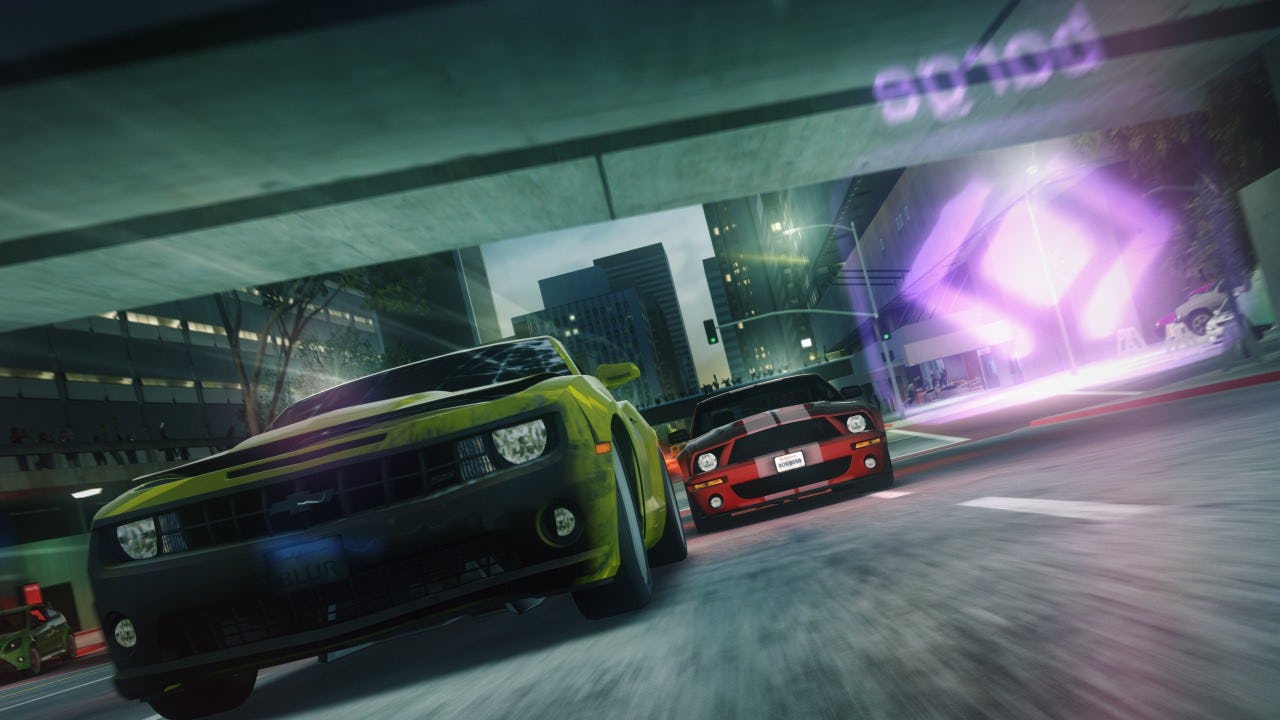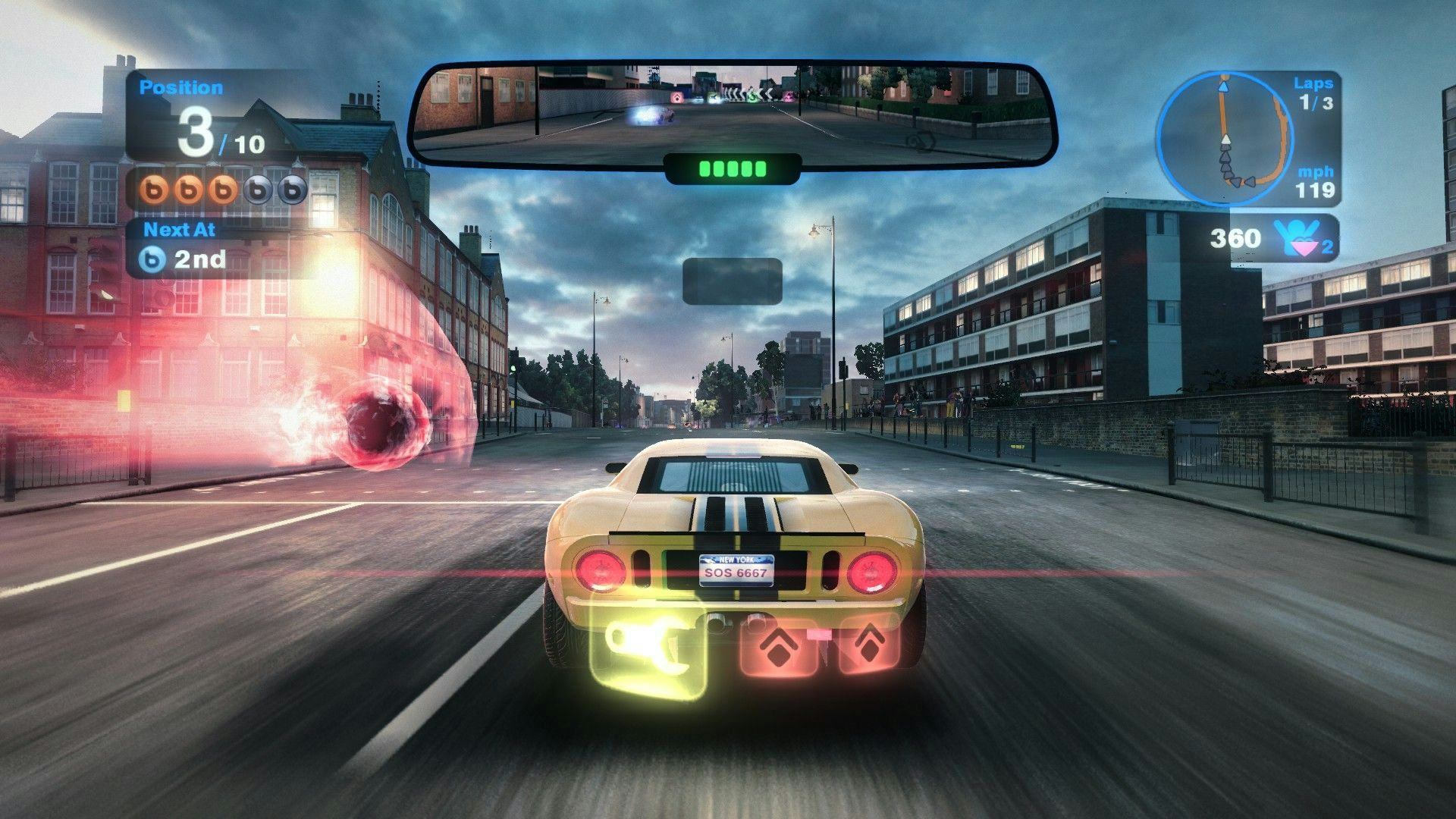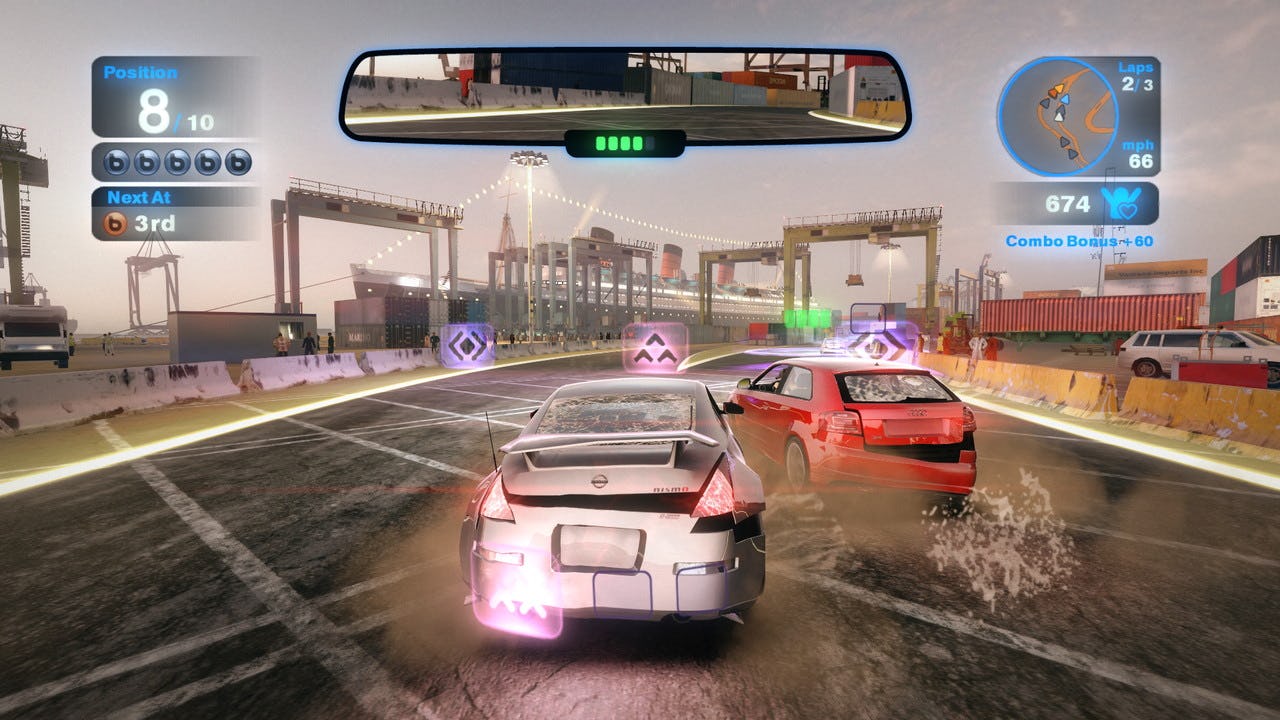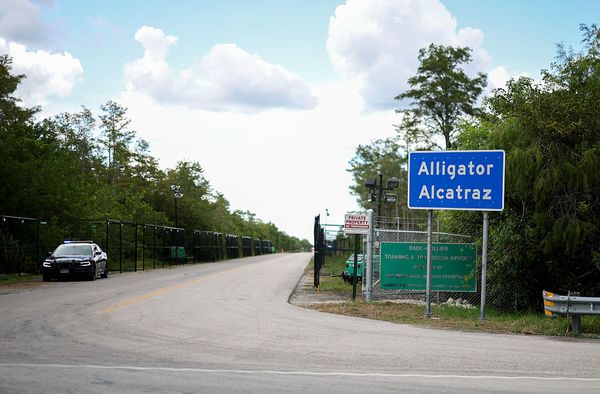
The cart racer is one of gaming’s most approachable subgenres. Typically signified by their stylized graphics and deceptively simple gameplay, these arcade twists on racing sims are fast-paced party games. Your cousin and grandfather aren’t going to play Forza together, but they can both hang in a round of Mario Kart.
When Bizarre Creations, the developer of the critically acclaimed Project Gotham Racing series, was purchased by Activision in 2007, the last thing anyone expected was a hard break from their semi-realistic street racing. But while their first game under the Activision banner was a forgettable third-person shooter, their 2010 follow-up, released 15 years ago today, was one of the greatest arcade racers ever made. Bizarre’s magnum opus masterfully balanced realism and fun, yet tragically led to the developer’s demise.
On the surface, Blur looks like any other 2000s racing game. It features real car manufacturers like Ford and BMW, and in stills, it looks like one of countless games influenced by the Fast and Furious franchise, where racers compete for first place in the dead of night. Sure, the contrast may have been cranked to 10, but that seemed like a small differentiator at a time when series like Need For Speed and Midnight Club were hitting their stride.

But looks can be deceiving, and underneath its facade of neon-lit streets is a compelling blend no one saw coming. Blur is Mario Kart.
Once you make your first turn in Blur’s frantic 20-player races, its similarities to Nintendo’s franchise become abundantly clear. Glowing power-ups litter the tracks, and their analogous functions are immediately obvious. The red shunt pickup is just the homing red shell. The yellow mine ability is the banana peel, the green nitrous is a mushroom, and so on. Playing with friends and strangers online, it was hilarious how quickly everyone’s shared knowledge of Mario Kart lent Blur its shorthand. You wouldn’t hear “he’s got a shunt” when talking trash, but “he’s got a red shell.”
Bizarre didn’t just copy Nintendo’s homework, but perfected it. To add dimension to competitive play, items weren’t randomized, but clearly labeled. Players could store up to three and select which to use at will, allowing players or teammates to strategize how best to employ their arsenal. Getting hit with items, however, rarely spelled doom, as power-ups weren’t as devastating as a blue shell could be.
Despite its balance, there was still plenty of room for unpredictable fun. Whether playing in teams or anarchic free-for-alls, jam-packed 20-player races meant constantly bumping into other players, all of them desperately fighting for placement and items. It’s a chaos that can only be compared to the loud barrage typically associated with series like Call of Duty and Battlefield, with Activision even pitching it as a road-based CoD game.
What went wrong? While never officially documented, I’ve always had two hunches. First, the game came out a week after Split Second. The Disney-published racing game, whose selling point was mid-race setpieces literally pulled from Michael Bay films, presented far better to potential buyers than Blur. Likely to counteract the competition, Blur famously had a multiplayer demo on the Xbox 360 that lasted weeks, and I vividly remember seeing dozens of people on my friends list playing it.

Unfortunately, this demo, while extremely fun, wasn’t enough of an incentive to get people to drop 60 bucks on the game. This brings me to my next hunch. Blur had word of mouth, but it couldn’t escape the black hole of Rockstar Games. May 2010 also saw the release of Red Dead Redemption, and as much as I loved playing Blur, my video game budget went to the open-world Western. I suspect I wasn’t alone. Several commercial failures were released that month: Modnation Racers, Alan Wake, Prince of Persia: The Forgotten Sands, and even Split Second all flopped at retail, overshadowed by the year’s biggest blockbusters.
Despite being a critical darling, Blur’s initial sales were an abysmal 31,000 copies. Activision, deep in its era of milking Guitar Hero and Call of Duty for all their worth, wrote off the masterpiece it had just published as a failure. The game was delisted from digital platforms within just three years, as it couldn’t justify the cost of renewing licenses for the real-life vehicles it featured.
In a better world, I’d be looking forward to Blur 5. Hell, I’d even accept a Blur HD remake. Instead, Blur is a fond memory for players lucky enough to recognize its greatness. Bizarre Creations would shutter by the end of 2010, but the developer didn’t go quietly into the night. Blur is one of the best arcade racers ever made, and it still deserves its flowers all these years later.







